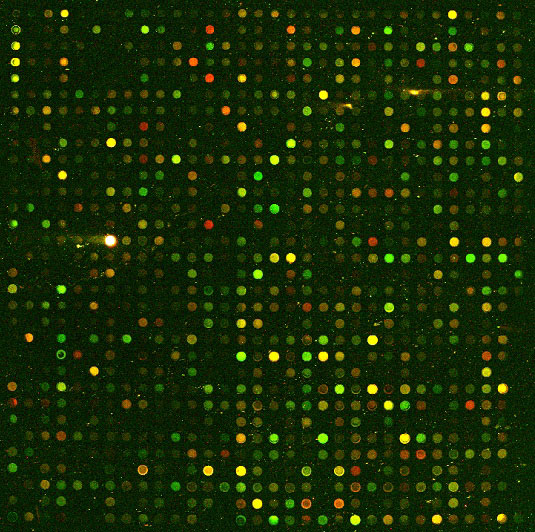
microarrays
The Living Microarray: The ‘Coming Of Age’ Of Transcription Profiling
American artist Andrew Leicester has made a bit of a name for himself at Iowa State University by incorporating his art into the architectural design of the University’s Molecular Biology Building. Leicester’s much heralded G-Nome Project represents his attempt to evince the benefits and threats of genetic engineering to society, through sculpture and mosaic (1). I chanced upon Leicester’s art five years ago as an instructor at a Promega/Corning collaborative workshop in Iowa on the applicability of microarrays in transcription profiling. The workshop aimed to bring Promega’s cDNA synthesis chemistries and Corning’s cutting-edge UltraGAPS slide technologies to the attention of a small group of ebullient young scientists with a broad spectrum of research backgrounds. The floor of the atrium right outside our teaching room showcased Leicester’s ‘Novel Agents’ mosaic, incorporating a super-genetic monster as a warning of the potential perils of genetic manipulation.

Fortunately for us, the ever-prolific genomics era seems not to have spawned the terrors that Leicester depicted in his art (at least nothing as singularly destructive as a super-genetic monster). To be sure, genetic research is playing its role in the development of novel pharmaceuticals for today’s most challenging diseases. One can be similarly upbeat about the world of transcription profiling. Microarrays have come a long way since the days of self printing on a slide for single time point analysis. Continue reading “The Living Microarray: The ‘Coming Of Age’ Of Transcription Profiling”
